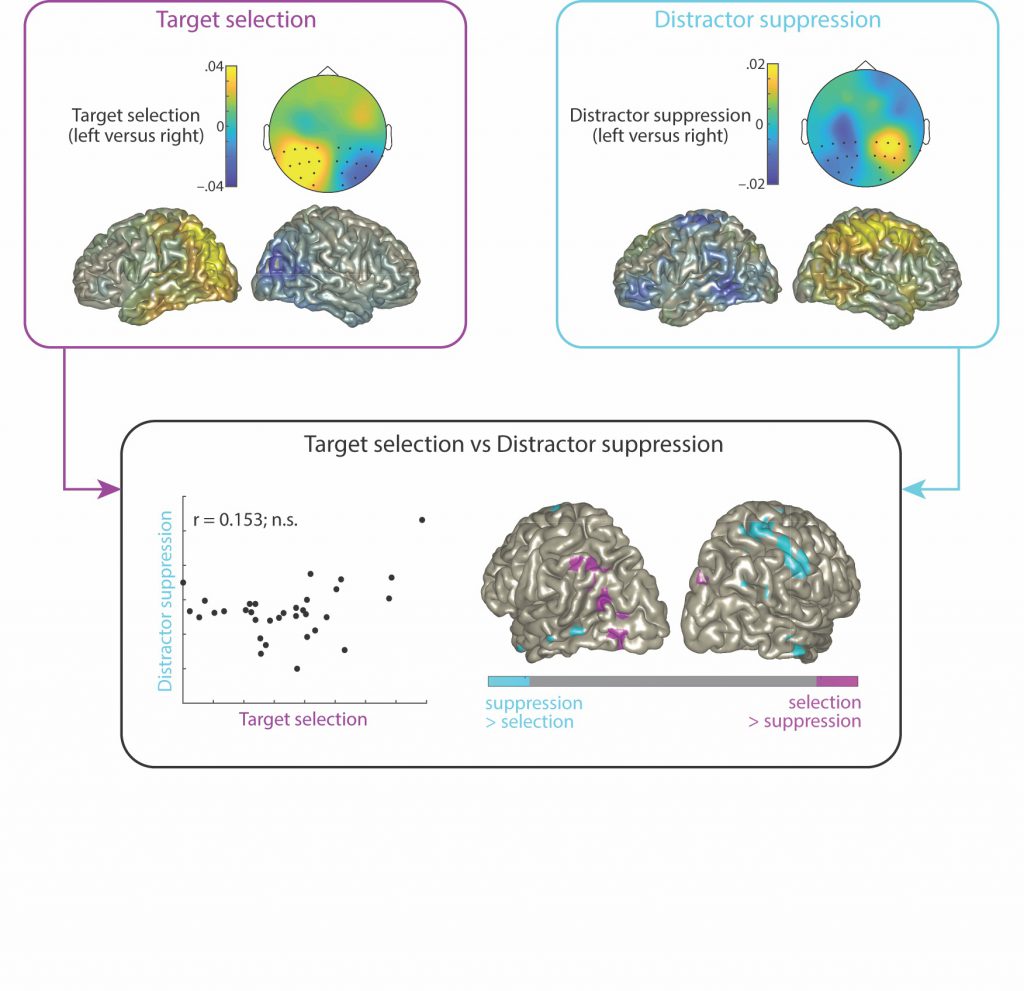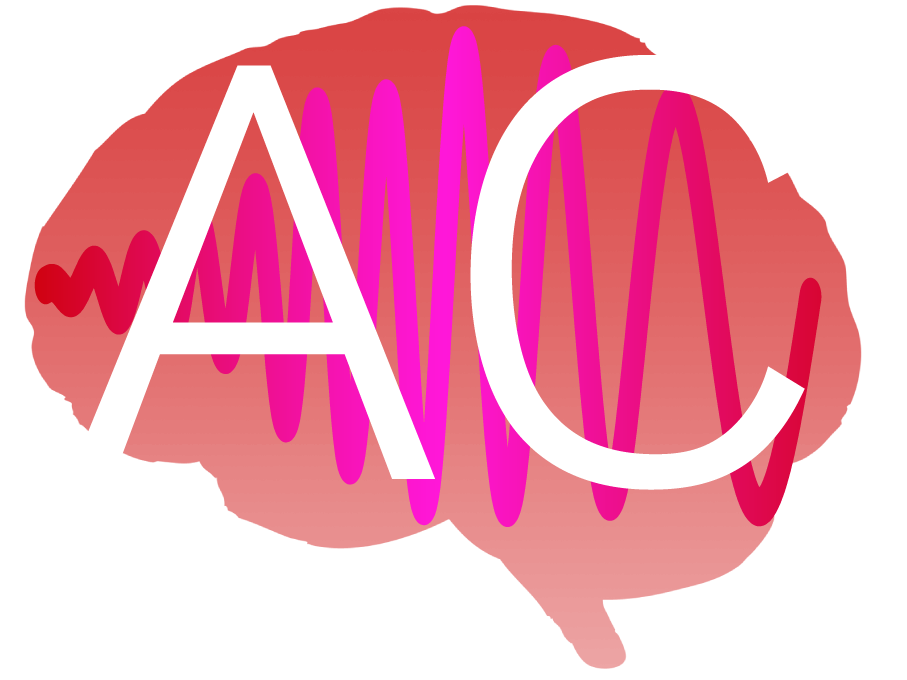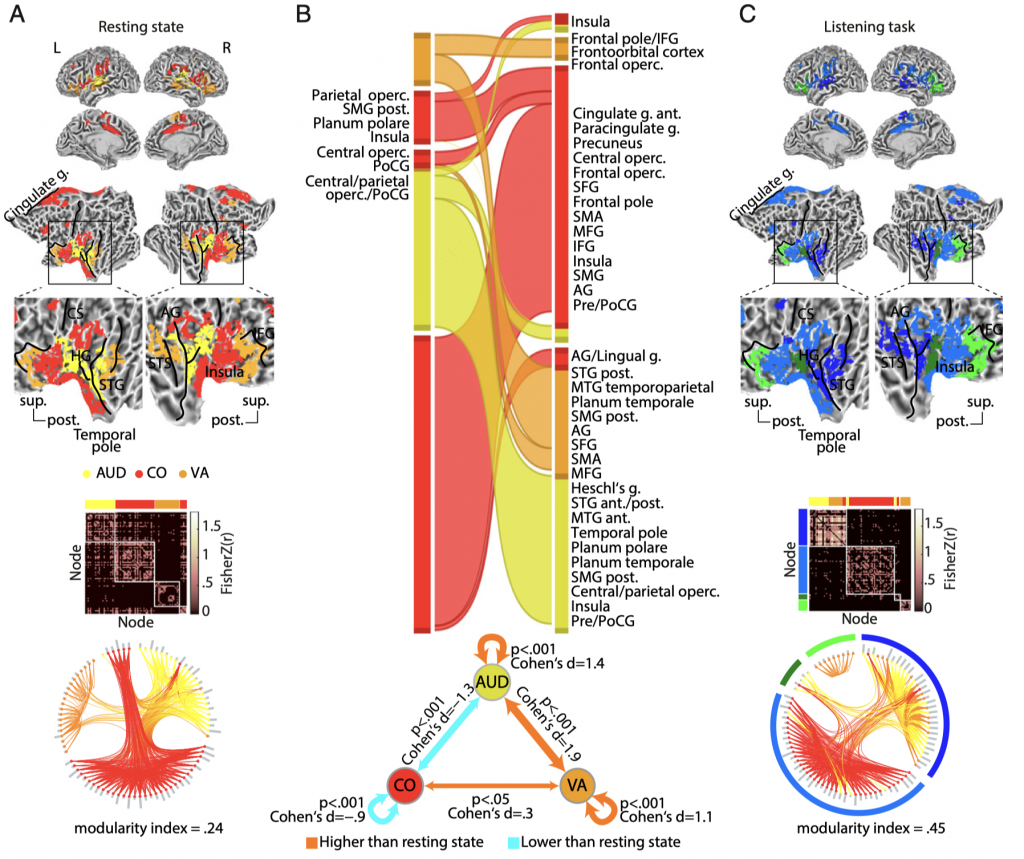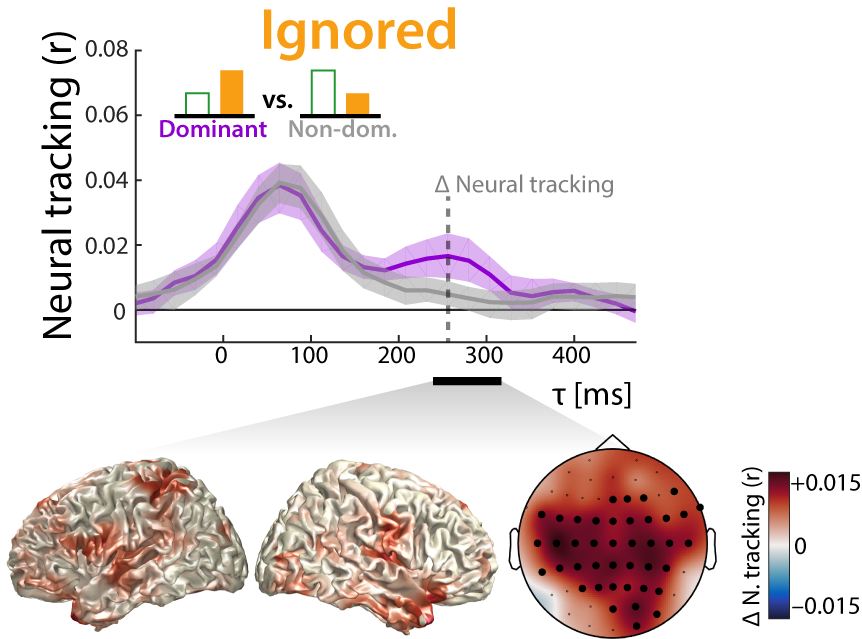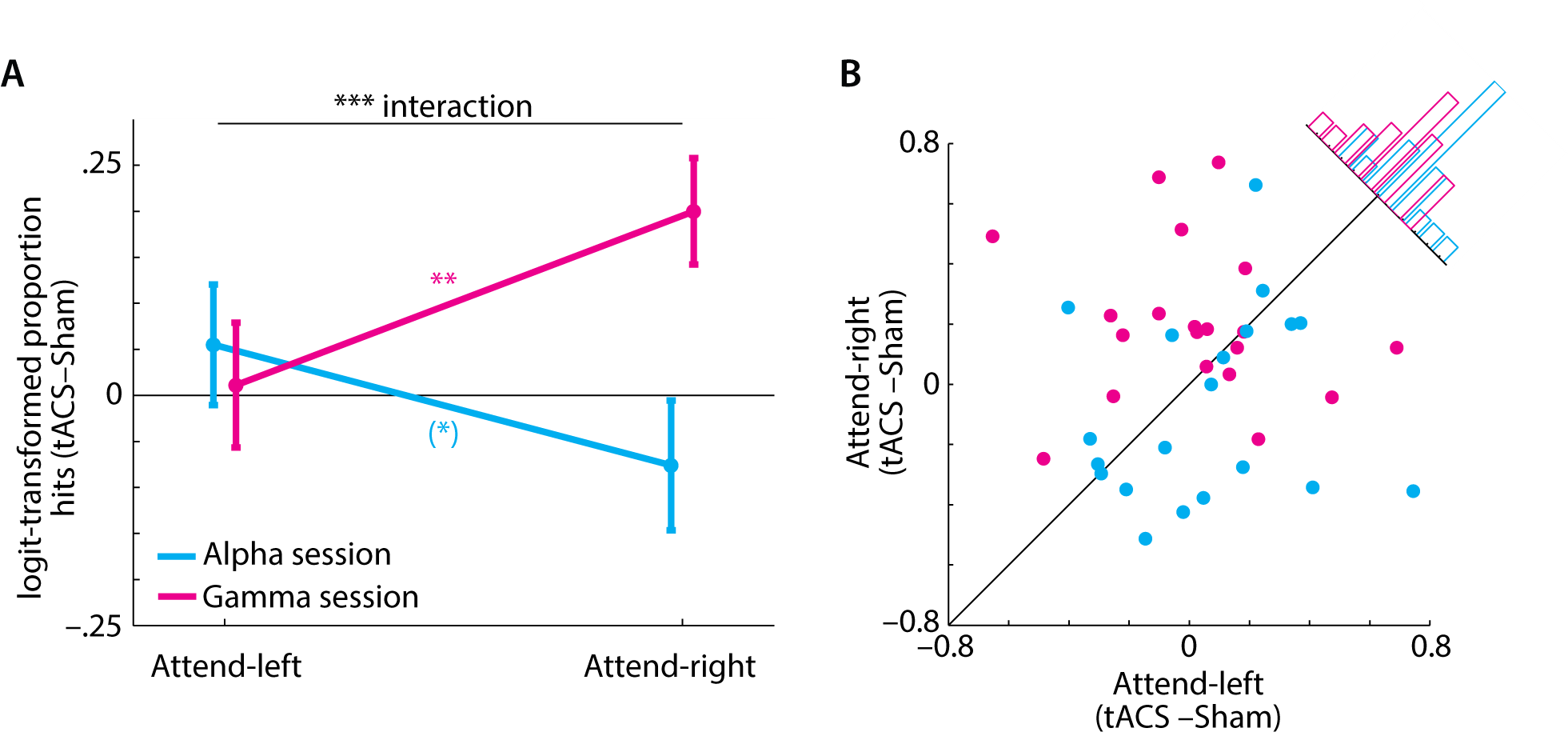Wöstmann, Alavash and Obleser demonstrate that alpha oscillations in the human brain implement distractor suppression independent of target selection.
In theory, the ability to selectively focus on relevant objects in our environment bases on selection of targets and suppression of distraction. As it is unclear whether target selection and distractor suppression are independent, we designed an Electroencephalography (EEG) study to directly contrast these two processes.
Participants performed a pitch discrimination task on a tone sequence presented at one loudspeaker location while a distracting tone sequence was presented at another location. When the distractor was fixed in the front, attention to upcoming targets on the left versus right side induced hemispheric lateralisation of alpha power with relatively higher power ipsi- versus contralateral to the side of attention.
Critically, when the target was fixed in front, suppression of upcoming distractors reversed the pattern of alpha lateralisation, that is, alpha power increased contralateral to the distractor and decreased ipsilaterally. Since the two lateralized alpha responses were uncorrelated across participants, they can be considered largely independent cognitive mechanisms.
This was further supported by the fact that alpha lateralisation in response to distractor suppression originated in more anterior, frontal cortical regions compared with target selection (see figure).
The paper is also available as preprint here.
